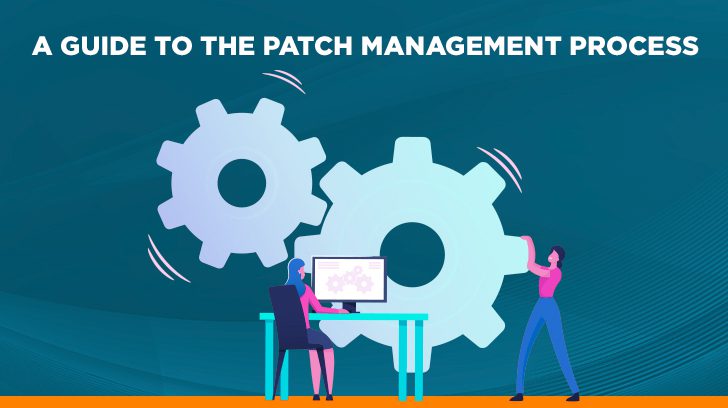A few years ago, during a SOC 2 audit for a mid-sized SaaS company, we noticed a gap: their patch management program looked solid on paper, but the execution was flawed. The client had a policy that mentioned monthly updates, a ticketing system for patch deployment, and even a patch management report that was presented quarterly. But as we dug into the evidence, we discovered a critical vulnerability had gone unpatched for over six months. The answer to why this happened was both simple and telling: a single server had been excluded from their patch management system due to a misconfigured asset inventory.
That single oversight, and the lack of a clearly defined patch management lifecycle, meant that the organization had no process control patches for systems not enrolled in the primary tool. And this wasn’t an isolated case.
What is Patch Management?
Simply stated, patch management is the process of identifying, acquiring, testing, and deploying updates (patches) to software and systems. But the real world is messy. It’s one thing to have a process on paper and another to have it work under pressure when your team is juggling other responsibilities or higher-priority items.
In the case of our client, the patching process was partially manual, partly automated, and wholly dependent on one system administrator. When he went on leave, things got missed—highlighting why patch management isn’t just a technical task, but an organizational responsibility. Read here to learn more about the potential risks of patch management.

Why Is Patch Management Important?
Many companies think, “We have antivirus and a firewall, why must we focus on patching?” But in SOC 2 audits, patch management is one of the most common areas where we see breakdowns. Unpatched systems often become the cause of control exceptions. It’s not just about missed patches, it’s about the control failures that allowed those misses to happen.
Why patch management is important goes beyond compliance. Vulnerabilities in unpatched systems are often exploited in ransomware attacks and data breaches. For example, a delay in applying a vendor-issued patch for a database system can expose you to a known SQL injection risk.
The Patch Management Life Cycle
A functioning patch management lifecycle involves several key patch management steps.
- Asset Inventory – You can’t patch what you don’t know exists. Most organizations maintain a very basic asset inventory which usually includes Operating Systems, IP Addresses, location, and sometimes the owner. While this is helpful and better than not having an inventory at all, it does not include enough details to properly understand the organization’s threat vectors. A best practice is to expand the inventory list to include at least the OS version, installed applications and their versions, the function of the asset (i.e. Domain controller, web server, database), interfaces/services/protocols, and a criticality score.
- Vulnerability Identification – Once you know what you have, you need to know what’s wrong with it. The best way to know if a vulnerability exists is to employ discovery and scanning capabilities. A proper discovery service uses a combination of active and passive scanning features and the ability to identify physical, virtual, and on and off-premise systems.
- Patch Acquisition – Getting updates from reputable sources. Patch sources should be consistent, authenticated, and auditable, such as Microsoft, Oracle, SQL, etc. You also should define a reliable system for identifying new vulnerabilities. Waiting for the operating system or application to release a patch is not sufficient. In some cases, a new vulnerability may not have a patch available and the organization must mitigate or remediate the risk by other means.
- Testing – Critical for production systems. Patches should be tested prior to going live. This step is often missed or skipped. To mitigate these risks, organizations with mature patch management programs maintain a dedicated staging environment that mirrors production as closely as possible. Before a patch is pushed live, it is deployed and monitored in staging. This gives teams a chance to review application functionality, performance, and security logging post-patch.
- Deployment – Automate where possible, but track exceptions. Most people think this step is what makes up patch management, however, while this step is important, to have a working patch management system, all steps should be followed.
- Review and Reporting – This is where the gaps often surface during audits. Check and report on the patches. A patch was suspected to be applied, and a ticket says it was, however, there’s no follow-up to prove it. Review to make sure that the patch was put into place and is working properly.
- Documentation – Include evidence in your patch management report for audit purposes.

How Often Should Patch Management Be Performed?
There’s no correct answer but the key is consistency and visibility. At a minimum, organizations should be performing vulnerability scans and applying patches on a defined, recurring schedule, typically monthly for standard updates, and as needed for critical vulnerabilities. But timing is only part of the equation.
It is important to develop a patch management policy that includes clearly defined frequency requirements and not just for routine updates, but also for how quickly critical or high-risk vulnerabilities should be addressed. The policy should distinguish between different severity levels, environments (e.g., production vs. development), and system types, and it should specify how emergency patches are handled outside the normal cycle.
What Are the Different Types of Patch Management?
These are the common types of patch management strategies that organizations commonly implement.
- Security Patch Management: Focuses on fixing vulnerabilities across systems to prevent exploitation. It’s essential for protecting sensitive data and maintaining compliance with security standards like SOC 2.
- Network Patch Management: Involves updating firmware and software on network devices like routers and firewalls for secure and uninterrupted communication.
- Centralized Patch Management: Uses a single platform to manage patches across an entire IT environment, improving consistency, oversight, and efficiency.
- Application Patch Management: Covers updates for commercial and custom apps to fix bugs, improve features, and close security gaps without disrupting operations.
- OS Patch Management: Keeps operating systems current with the latest fixes and enhancements to maintain stability, security, and compatibility.
- Software Patch Management: Updates software across devices and departments to minimize risks and improve performance.
- IT Patch Management: Encompasses the overall patching process across an organization’s tech stack, supporting both security and operational continuity.

Benefits of Patch Management (When Done Right)
The benefits of patch management include more than security. They include operational stability, regulatory compliance, and reduced emergencies. A mature patch management program reduces business disruptions. It means fewer high-severity findings in your audits.
For the client with the excluded server, their audit ended with a qualified opinion. But the silver lining? They overhauled their patching process, implemented automation with alerts for out-of-band systems, and now run internal mock audits every quarter. That lesson stuck.
Common Issues & Roadblocks with Patch Management
Even mature environments hit roadblocks with patch management. Here are a few we often see in SOC 2 reports.
- Unreviewed Exceptions – Exceptions are written when something can’t be patched—but they’re rarely revisited. If left unchecked, they become long-term risks with no mitigation.
- Legacy Software That Won’t Go Away – Sometimes old systems can’t be patched. When that happens, limit access, segment the network, and increase monitoring. Don’t let “we can’t patch it” be the end of the conversation.
- Risk in Silos – Looking at vulnerabilities one at a time misses the big picture. A dozen low-risk findings may add up to a high-risk environment if left unmanaged.
- Policy Without Accountability – A patch management policy isn’t effective unless it’s enforced. If no one is tracking compliance or holding teams accountable, the policy is just paper.
Building a Robust Patch Management Program That Works
Patch management is more than just applying software updates; it’s a critical security function that often becomes a source of audit findings when overlooked or inconsistently applied. In this post, we explored the full patch management lifecycle – from asset inventory and vulnerability scanning to testing, deployment, and reporting. Drawing from SOC 2 audit experiences, we highlight common pitfalls such as forgotten exceptions, unsupported legacy systems, and policy enforcement gaps. We also explained how to implement an effective patch management program with the right tools, clear roles, and documented processes. Whether you’re preparing for an audit or tightening internal controls, this guide offers practical insights into building a patching process that actually works.
Linford & Company provides multiple services like SOC 1 audits, SOC 2 audits, FedRAMP compliance certifications, and HIPAA audits that are designed to assess an organization’s security management and regulatory compliance effectiveness. Contact us if you would like to discuss our services further.
This article was originally published on 8/7/2019 and was updated on 4/9/2025.

Jessica Kiel joined Linford & Company, LLP in 2023 and she came with over twelve years of experience in internal controls, SOX, controls over Financial Reporting (ICFR), SOC1, SOC 2, Third Party Assurance, and attestations/examinations based on PCAOB or AICPA standards. Jessica began her career with Deloitte in 2011 where she served in a leadership role for the last eight years. Jessica graduated from Southern Illinois University-Carbondale with a Bachelor’s of Science in Accounting and a Masters of Accounting.



